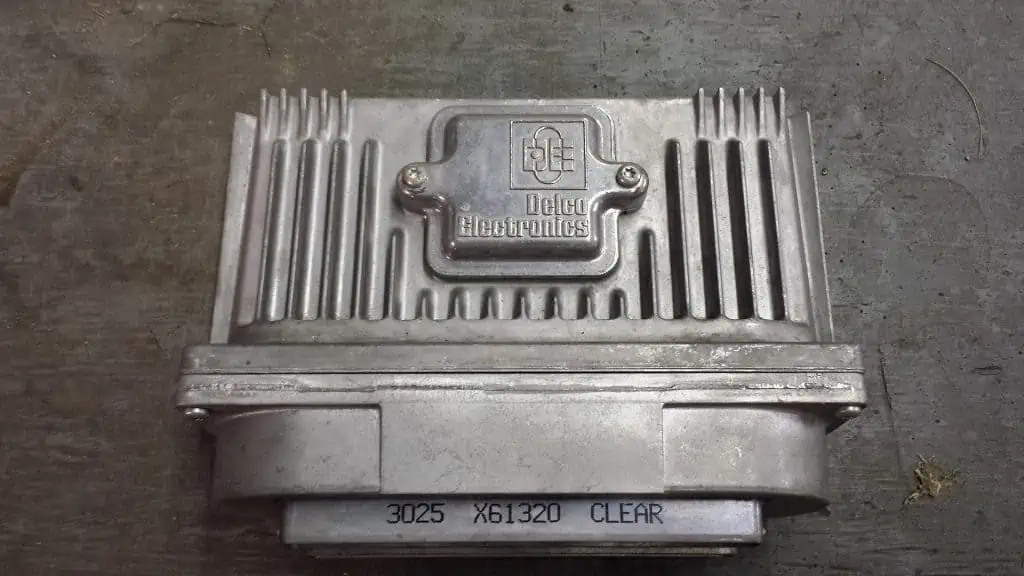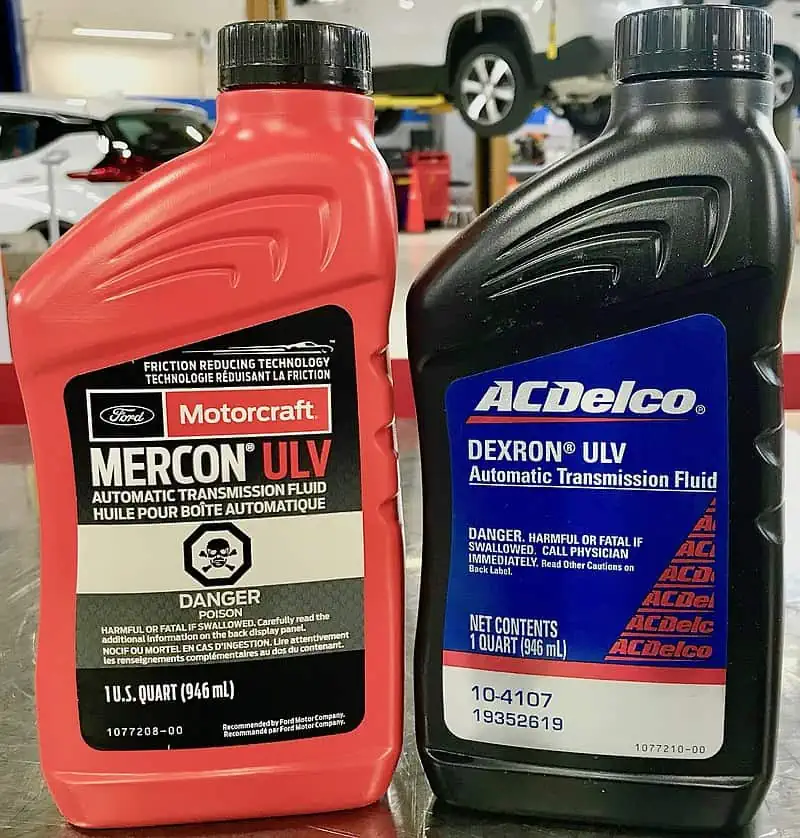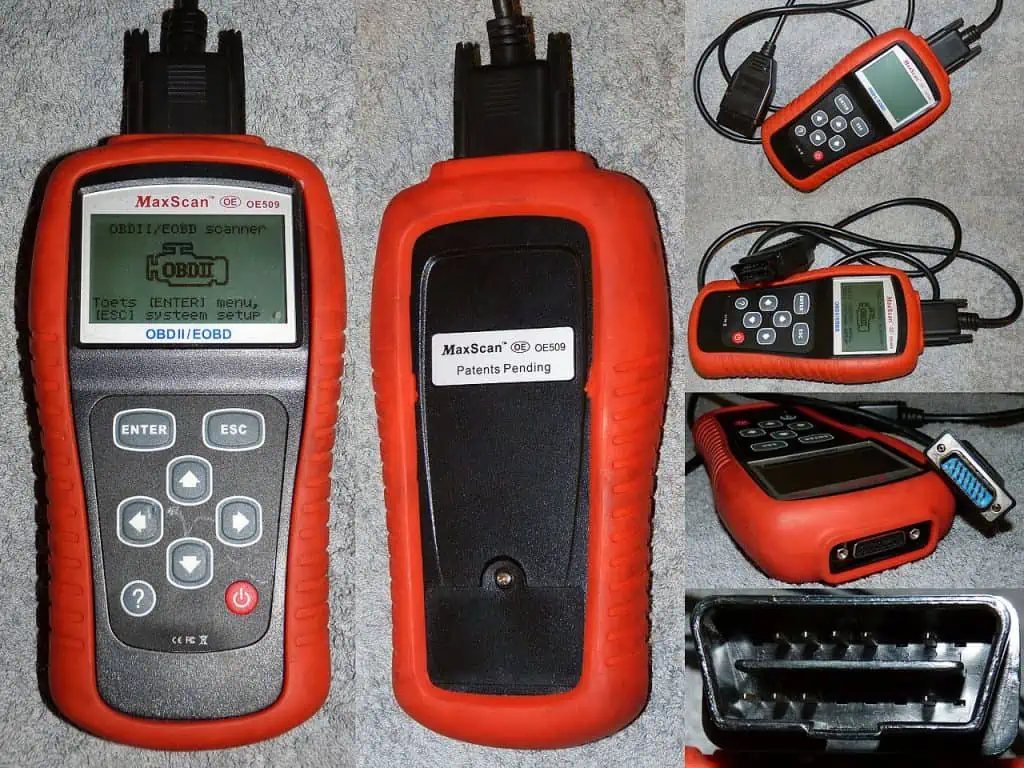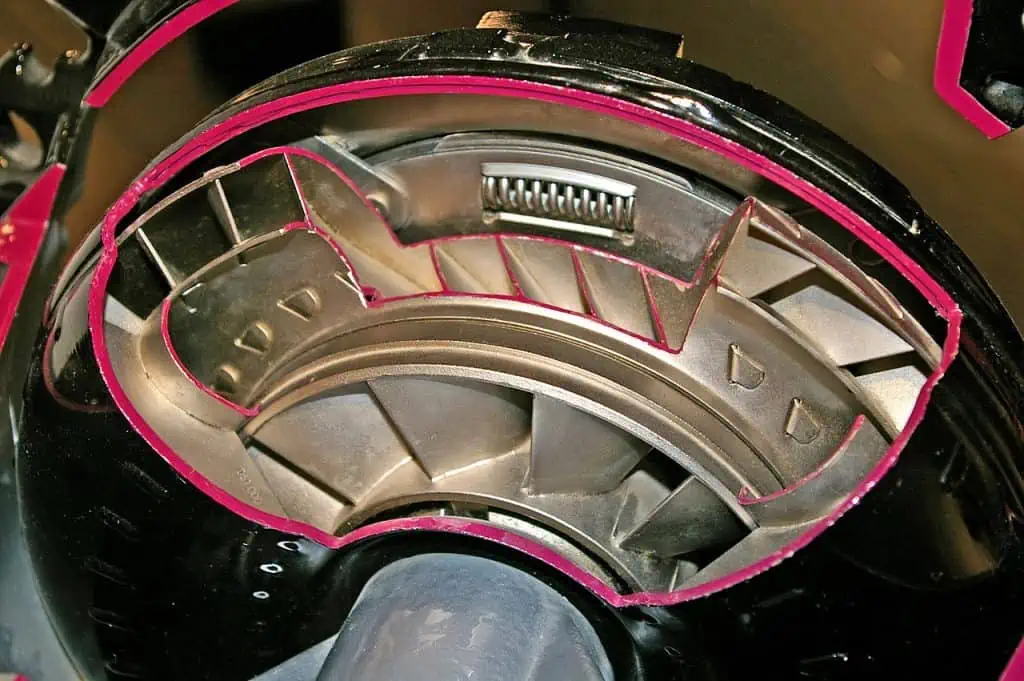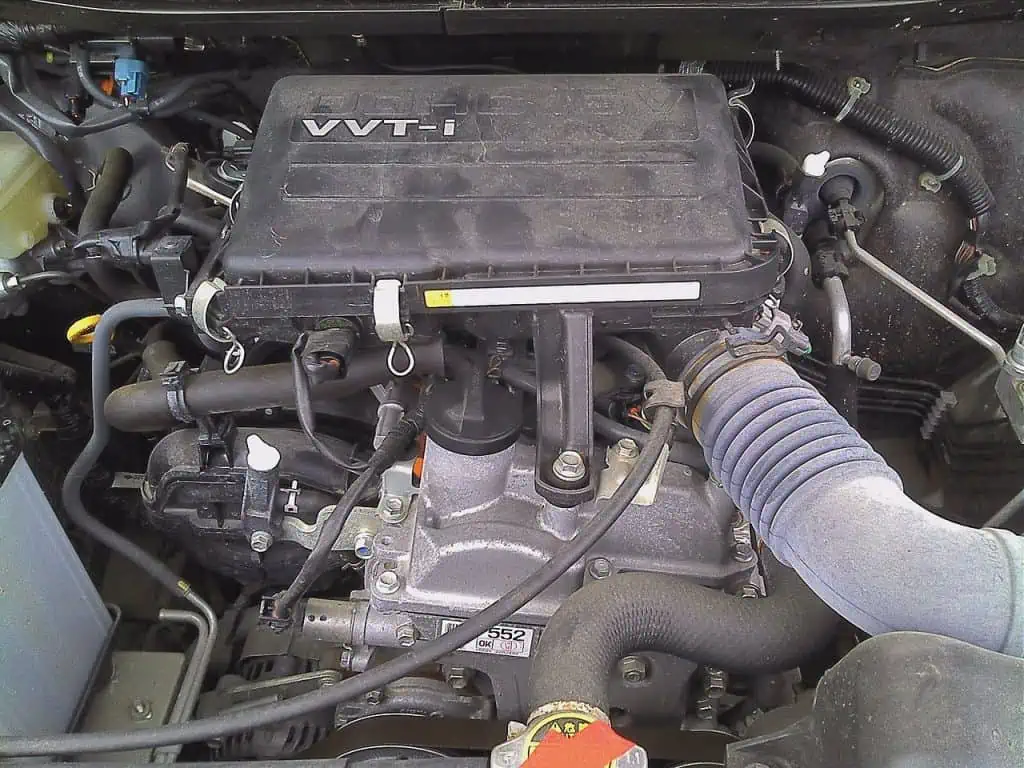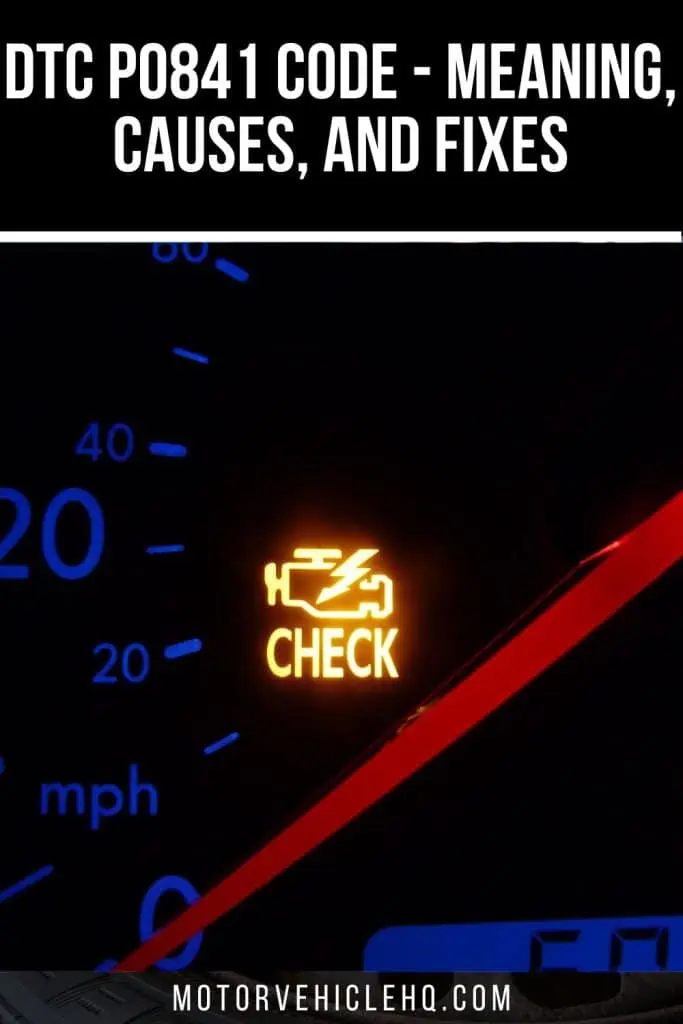Transmission oil or automatic transmission fluid (ATF) is the liquid that powers every automatic transmission. The ATF’s role in the transmission unit is to lubricate its reciprocating parts.
This allows for smooth gear shifting by preventing accelerated component wear and transmission overheating.
A crucial part of the powertrain is the switch or sensor for the transmission of oil pressure. It keeps track of and controls how much pressure accumulates in the gearbox crankcase as the fluid moves through it.
The PCM is then informed about the fluid pressure. Depending on the signal it receives, the PCM modifies how the transmission acts. This makes switching between different gear ranges effortless and ideal.
Several more recent cars feature many switches for the transmission of oil pressure. Depending on the brand and model of the car, the location and sizes change.
The car’s computer will record error codes like P0840 and P0841 when this switch malfunctions and will also check the engine light.
This article will cover the definition of error code P0841 as well as its causes, symptoms, common misdiagnoses, and how to identify and correct them. Take five minutes to read as you relax.
P0841 Code: How Can It Be Defined?
Performance of the “A” Circuit Range for the Transmission Fluid Pressure Sensor/Switch
P0841 Code: What Does It Mean?
Generally speaking, all OBD-II-equipped vehicles, including but not limited to Jeep, Dodge, Mazda, Nissan, Honda, GM, etc., have this generic powertrain or engine diagnostic issue code.
The Transmission Fluid Pressure Sensor or Switch (TFPS) is frequently found screwed onto the side of the transmission case or body, but it can also be found attached to the side of the valve body inside the transmission.
The Powertrain Control Module (PCM) or Transmission Control Module receives an electronic signal from the TFPS that is made up of the mechanical transmission pressures (TCM).
The PCM or TCM will typically inform other controllers through the data communication bus of the vehicle. This voltage signal is received by the PCM or TCM to determine the transmission operating pressure or when a shift is taking place.
If the “A” input does not match the typical operating voltages recorded in the PCM/memory, TCM’s this code is set. The transmission’s internal mechanical problems could also be to blame.
A Powertrain Control Module (PCM) by Mgiardina09 / CC BY-SA 3.0. The TFPS sends an electronic signal made up of the mechanical transmission pressures to the Powertrain Control Module (PCM) or Transmission Control Module (TCM). Usually, the vehicle’s data communication bus is used by the PCM or TCM to communicate with other controllers. The PCM or TCM receives this voltage signal to ascertain the transmission operating pressure or whether a shift is occurring.
To find out which is the “A” circuit for your car, consult a repair manual for that vehicle.
Although, as previously mentioned, this code may also be set due to mechanical issues (such as; internal leaks, cracked or missing check balls in the valve body, low system operating pressure or main line pressure, the stuck valve in the valve body), P0841 is typically an electrical circuit (TFPS sensor circuit) issue.
This must be considered during the troubleshooting process, especially if the issue is intermittent. Depending on the manufacturer, type of TFPS sensor, and wire colors, troubleshooting procedures may change. Corresponding codes for the trans fluid pressure sensor A:
1. P0840: Sensor or Switch “A” Circuit for the Transmission Fluid Pressure
P0840 indicates a malfunction with the switch “A” circuit or the transmission fluid pressure sensor. This code explicitly denotes that the sensor inside the circuit has discovered out-of-range pressure or irregularities in the pressure of the transmission fluid.
2. P0842: Sensor or Switch “A” Circuit Low Transmission Fluid Pressure
P0842 denotes problems with the voltage performance of the switch “A” circuit or the transmission fluid pressure sensor. It specifically denotes low mainline pressure or system operating pressure for low-voltage transmission.
3. P0843: Sensor or Switch “A” Circuit High Transmission Fluid Pressure
P0843 denotes problems with the switch “A” circuit or the sensors’ ability to detect transmission fluid pressure. This code explicitly denotes that a high voltage reading signal was detected by the sensor.
4. P0844: Intermittent Transmission Fluid Pressure Sensor or Switch “A” Circuit
The error number P0844 denotes problems with the switch “A” circuit’s transmission sensor. In more detail, it shows that the system input cannot reliably match the typical operating voltages stored in the PCM or TCM of the car.
These error codes are generic difficulty codes that apply to all OBD-II-equipped vehicles, especially those manufactured after 1996. Models of Chevrolet, GM, Toyota, Honda, and Ford automobiles are among them, but they are not the only ones.
Why Does the P0841 Code Occur?
The P0841 error code could have one or more reasons. A defective electronic pressure control solenoid can be one of them.
Another possibility is that your car has hydraulic obstructions inside the internal transmission fluid passageways or that there is a problem with your transmission fluid pressure sensor.
A hydraulic automatic transmission by Silverxxx / CC BY-SA 3.0. You can have dirty or contaminated transmission fluid, low transmission fluid, or mechanical internal transmission problems. A faulty PCM or transmission control module is possible, though uncommon. One of several potential explanations for the error code P0841 to be noted by the car’s computer is the transmission fluid pressure switch. The PCM can write this code because of issues with other drivetrain components. If you are receiving inaccurate data, be careful to check all system components.
You could also have mechanical internal transmission issues, low transmission fluid, or filthy or tainted transmission fluid. Although unlikely, a defective PCM or transmission control module is conceivable.
The transmission fluid pressure switch is just one of many possible causes for the error number P0841 to be recorded by the car’s computer.
Because of difficulties with other drivetrain parts, the PCM can write this code. Make sure to inspect all system components if you are getting erroneous data. The following are possible reasons for P0841 on Dodge and other vehicles:
- A signal circuit with low voltage leads to the transmission fluid pressure switch.
- The signal circuit is open.
- Contaminated transmission fluid
- Breakdowns of the internal mechanical transmission
- Faulty TFPS sensor
- Blockage of the internal fluid passage in the hydraulics system
- TCM or PCM malfunction (this is rare but conceivable)
What Symptoms are Associated with a P0841 Code?
Depending on which trouble number your car shows, the symptoms connected to it can change.
The most frequent symptom linked with these codes is shifting problems because a vehicle’s gearbox employs hydraulic pressure that is regulated by solenoids and the PCM to create torque and shift gears.
In addition to turning on the check engine light, a vehicle with the P0841, P0842, P0843, or P0844 code may also:
- Loss of ability to shift
- Shifting irregularly
- Reduction in fuel efficiency
- Abrupt gear changes
- Torque converter clutch disengagement or absence of engagement
The first indication is likely to be the check engine light turning on, although these symptoms are more common if the problem has worsened.
The Automatic Transmission Fluid (ATF) by Hymn62 / CC BY-SA 4.0. Every automatic transmission is powered by transmission oil, often known as automatic transmission fluid (ATF). In the transmission unit, the ATF’s function is to lubricate the moving components. Avoiding rapid component wear and transmission overheating, enables smooth gear shifting. The switch or sensor for the transmission of oil pressure is an essential component of the powertrain. It monitors and regulates the amount of pressure that builds up as the fluid passes through the gearbox crankcase.
Troubleshooting Code P0841: How Do You Do It?
Start by examining the condition and level of the transmission fluid. If the transmission fluid level is low, identify the problem and make any necessary repairs.
After that, look for technical service bulletins (TSBs) that address the issue. Locate the TFP and carry out a visual assessment of the sensor and wire if no TSBs are discovered.
Restore as necessary. Continue with a sequential diagnosis of the system if no issues have been discovered up to this point. For details on the precise diagnostic procedure, consult the manufacturer’s service manual.
1. Sensor Testing
Cut the sensor connector off. Connect a digital multimeter set to ohms between the sensor signal terminal and ground terminal when the ignition and key are off (or chassis ground).
Without applying any pressure, check the factory repair manual for the sensor resistance specifications. If the readings you acquire don’t fall within the factory parameters, the sensor should be replaced.
Also, there is an open circuit and the sensor needs to be replaced if your meter reads over the limit (OL).
2. Examine the Circuit’s Reference Voltage Section
Use a digital multimeter set to DC volts to check for a reference voltage to the sensor while the engine is running. Attach the negative meter lead to the ground and the positive lead to the sensor connector’s reference voltage terminal.
Reference voltage should appear on the meter (typically 5 volts). If not, there may be an issue with the PCM or the wiring. Switch off the ignition.
One lead should be connected to the reference signal terminal on the PCM, and the other lead should be connected to the reference signal terminal on the sensor connector.
Set the digital multimeter to ohms. A number should be visible on the meter. If, however, it reads “out-of-limits” (OL), there is a broken electrical connection between the PCM and the sensor that needs to be fixed.
Assuming everything has gone well up to this point, you should check the PCM reference voltage terminal for voltage.
Connect the positive meter lead to the reference voltage terminal on the PCM and the other to the ground with the ignition on and the digital multimeter set to DC volts.
A typical onboard diagnostics (OBD) handheld scanner by Arp. Transmission sensor issues in the switch “A” circuit are indicated by the error code P0844. More specifically, it demonstrates that the system input cannot accurately correspond to the typical operating voltages contained in the car’s PCM or TCM. These error codes are generic trouble codes that apply to all OBD-II-equipped vehicles, especially those made after 1996. These include, but are not the only, automotive models from Chevrolet, GM, Toyota, Honda, and Ford.
Reference voltage should appear on the meter (typically 5 volts). If it doesn’t, the PCM is either broken or needs to be reprogrammed. It’s a good idea to double-check all of your work up to this point before replacement because PCM failure is uncommon.
3. Inspect the Circuit’s Ground Side
A digital multimeter set to ohms can be used to check for continuity between the sensor and the ground. Connect the meter’s end to the sensor connector’s harness side and the other to the chassis ground.
An opening on the ground side of the circuit is indicated by an over-limit reading (OL) on your meter. To identify and fix the issue, see the factory wiring diagram/repair information.
4. Examine the Circuit’s Return Signal Section
Check for continuity between the return signal terminal on the sensor and the equivalent terminal on the PCM using a digital multimeter set to ohms while the ignition is off.
Attach a one-meter lead to the PCM’s return signal terminal and the other end to the sensor connector’s return terminal. If the meter reads “out of limits” (OL), the PCM and sensor have an open circuit that needs to be closed.
There is continuity if the meter displays a numerical reading. This indicates that there is either an issue with the internal transmission, the PCM is broken, or the PCM needs to be reprogrammed.
It’s a good idea to double-check all of your previous work before moving forward with any additional repairs because these possibilities are uncommon.
Repair Methods for the P0841 Code
Always check for technical service bulletins (TSB) for your specific vehicle as an excellent place to start. The manufacturer may have already released a fix for your problem, which can save you time and money while the problem is being diagnosed.
A suitable illustration of this would be if more than one pressure sensor/switch code set is present, or if any other known power-related codes are set alongside the P0841. If so, start with the multiple codes diagnostic or the power-related fault code first, as these could be the causes of the P0841.
Locate your vehicle’s Transmission Fluid Pressure Sensor or Switch (TFPS) next. The TFPS is typically found screwed onto the side of the valve body inside the transmission, though occasionally it may be seen there as well. Once found, visually check the wire and connector.
Watch out for rubbing, scraping, exposed wires, burn marks, or melting plastic. Examine the connector’s terminals (the metal components) in detail after taking it apart.
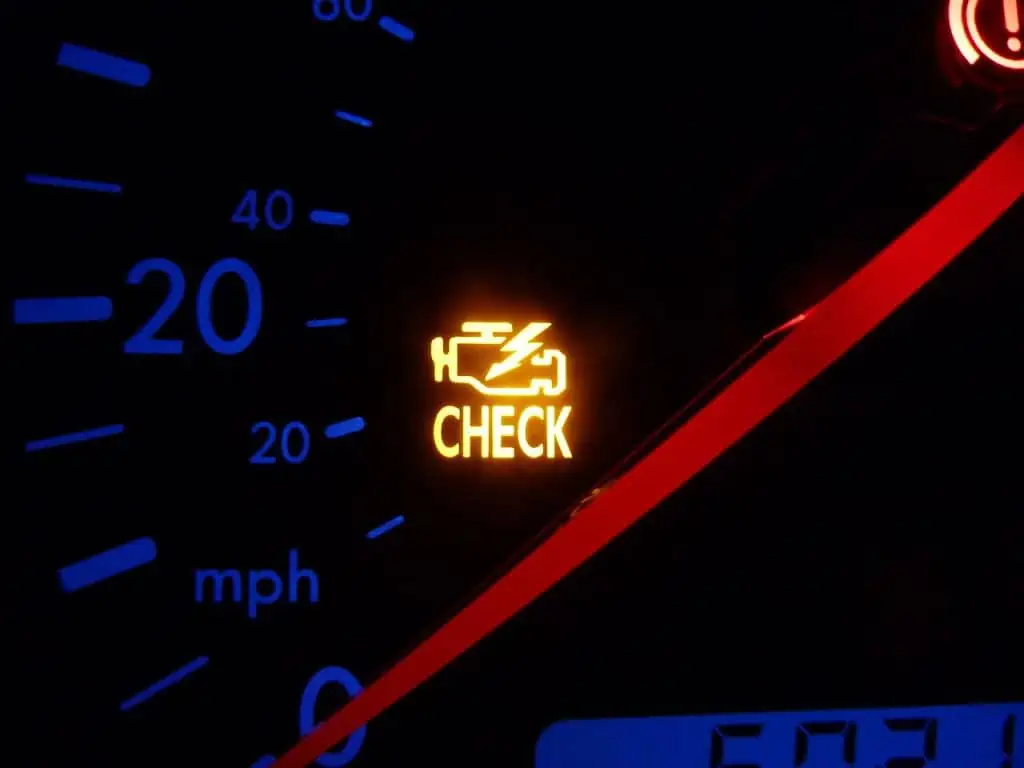
Especially if they are attached outside the transmission case, check to see whether they appear scorched or have a green color indicative of corrosion.
If the terminals need to be cleaned, use an electrical contact cleaner and a plastic bristle brush. Apply electrical grease where the terminals connect and allow it to dry.
Clear the memory of the diagnostic issue codes if you have a scan tool, then check to see if the P0841 code reappears. If it doesn’t, your issue was probably with the connections.
Since the external transmission connections have the most corrosion problems, this is the section that needs attention the most frequently.
We must test the TFPS sensor and any related circuits if the P0841 error signal does indeed return. Disconnect the electrical connector at the TFPS sensor when the key is off.
A Digital Voltmeter (DVOM) black lead should be connected to the ground or low reference terminal at the connector for the TFPS sensor wiring harness.
Attach the red lead of the Digital Voltmeter to the TFPS sensor wiring harness connector’s signal terminal. Start the engine by turning the key. You should either see 12 volts or 5 volts on the voltmeter; check the manufacturer’s requirements.
Move the connections around to see if anything happens. Repair the power or ground wire or swap out the PCM or TCM if the voltage is off.
If the previous test was successful, attach one lead of an ohmmeter to the TFPS sensor’s signal terminal and the other lead to the sensor’s ground or low reference terminal.
For an accurate test of the sensor’s resistance to pressure when no pressure is applied, consult the manufacturer’s specifications. While keeping an eye on the resistance, wiggle the connector at the Transmission Fluid Pressure Sensor or Switch. Replace the TFPS if the ohmmeter values are insufficient.
Although a failed PCM or TCM or internal transmission issues couldn’t be ruled out until the TFPS sensor had been replaced, getting a P0841 would suggest a failed TFPS sensor if all other tests had been successful.
Consult a qualified vehicle diagnostician if you’re unsure. For proper installation, PCM or TCMs must be programmed or calibrated to the vehicle.
What Will It Cost to Correct the P0841 Code?
The cause of the problem will affect how much it will cost to repair the Transmission Fluid Pressure Sensor. Depending on your shop’s labor charges, a professional diagnostic will normally run you $75 to $150.
A cut-away model of a torque converter by BerndB~commonswiki / CC BY-SA 3.0. If your transmission fluid smells burned, you must remove the transmission pan and look for clutch material and other debris. You will need to completely rebuild the transmission, new fluid, and a torque converter if these pollutants are found in the transmission pan. If you don’t, your transmission won’t function properly. Driving a vehicle with a P0841 code may be safe at first, but as the vehicle struggles to produce torque or shift gears, driving that vehicle will become increasingly difficult and dangerous.
An additional transmission fluid change could cost up to $200, while a new sensor alone costs about $100. The overall price to fix the problem will probably be close to $500.
P0841 Engine Code: Can I Fix It on My Own?
Depending on the individual problem, you might be able to resolve the P0841 engine code on your own. Filling up on transmission fluid or cleansing the transmission can quickly fix minor issues like low or filthy fluid.
Yet, complicated issues like a damaged Transmission Fluid Pressure Sensor circuit should be handled by experts. Before attempting any DIY fixes, you should have the P0841 engine code professionally diagnosed because it may affect your car’s ability to drive.
Refilling or Flushing the Transmission Fluid
If you do choose to refill or flush your transmission fluid, do as follows:
- Place your automobile in a flat area and look for the reservoir holding the transmission fluid. Check the fluid level with the dipstick. Increase the amount of fluid in the reservoir if the dipstick is clear. Flush the system if it’s a dark brown or black color.
- Raise the car with jack stands, allowing space for you to crawl underneath it.
- Find the pan holding the gearbox fluid under the car. Put a container under it.
- Pour the remaining fluid into your collection bucket after removing the fluid pan or the drain bolt.
- Get a replacement transmission fluid filter and clean the fluid system.
- Under the car, reinstall the fluid pan and filter.
- By inserting a funnel into the fluid reservoir and adding new transmission fluid, you can refill the transmission fluid.
Is the P0841 Code Serious?
The P0841 error code is significant and should only be handled by a qualified technician unless you are knowledgeable and have the necessary tools.
If you do not address this issue right away, it can compromise the performance of your engine and lower your gas mileage. Also, it might harm other parts of your car.
As soon as you notice any changes, it is always preferable to have a mechanic examine your vehicle. Long-term problems with your automobile can be expensive and perhaps permanent.
P0841 Jeep, or any vehicle, is quite harsh. A professional mechanic will be needed to identify and address the root of the problem unless you’re a gearhead with the necessary tools.
If this issue is not resolved quickly, it will lead to several drivability problems, including jerky gear changes, overheating, sliding, and poor gas mileage.
P0841 will have an impact on engine performance as a whole. Other parts of the drivetrain system may potentially sustain damage. Hence, whenever you experience any drivability issues, I encourage you to go to a mechanic shop.
Long-term driving, while a component is broken, will result in high repair costs. It may leave you stuck in the middle of nowhere and inflict catastrophic harm.
A typical car engine by Yones / CC BY-SA 3.0. P0841 will affect the overall engine performance. There is a chance that the drivetrain system’s other components could get hurt. Hence, whenever you have any drivability problems, I advise you to visit a mechanic. High repair expenditures will be incurred if a broken component is driven for an extended period. It might cause catastrophic injury and leave you stranded in the middle of nowhere.
Common Errors In P0841 Code Diagnosis
High-pressure pumps are frequently replaced when they don’t need to be electronic pressure control solenoids, transmission pressure sensors, and system wiring issues are frequently disregarded.
What Fixes are Available for The P0841 Code?
You must remove the transmission pan and search for clutch material and other debris if your transmission fluid smells burned.
If these impurities are discovered in the transmission pan, you will require a complete rebuild, new fluid, and a torque converter. Your transmission won’t operate correctly if you don’t.
How Simple Is the P0841 Code Diagnosis?
The color and consistency of the transmission fluid frequently change, making it very simple to determine whether there may be some problems with a car’s transmission.
The high-pressure pump is frequently replaced instead of the electrical parts, sensors, or solenoids when troubleshooting transmission problems based on these codes.
How Complex Is the P0841 Code Diagnosis?
The examination procedure becomes more difficult once the physical transmission fluid has been examined. It can be more challenging to inspect the physical and electrical components. The transmission system has a lot of tiny, sensitive parts.
Can I Still Drive My Car After Getting a P0841 Code?
Driving a car with a P0841, P0842, P0843, or P0844 code may be safe at first, but as the automobile struggles to shift gears or produce torque, its operation will become more challenging and unsafe.
As a result, you should address the root causes of these codes as soon as possible and limit your driving until the automobile has been fixed.
P0841 Code Further Ideas for Consideration
A prolonged drivetrain stressor is the cause of sensor issues in many older automobiles. The fact that a P0841 code has so many possible meanings makes it challenging to diagnose and fix.
Taking your car to a mechanic that has the right equipment to precisely and quickly diagnose your issue might be your best bet.
The Conclusion
Long-term use causes drivability problems in many older automobiles. Because it can be caused by several things, diagnosing and fixing error code P0841 can be very challenging.
The best course of action may be to get in touch with a licensed mechanic if the onboard computer in your car displays this code and you observe the warning indicators mentioned above.
A gearhead with the right equipment will be able to diagnose the problems more successfully and accurately.
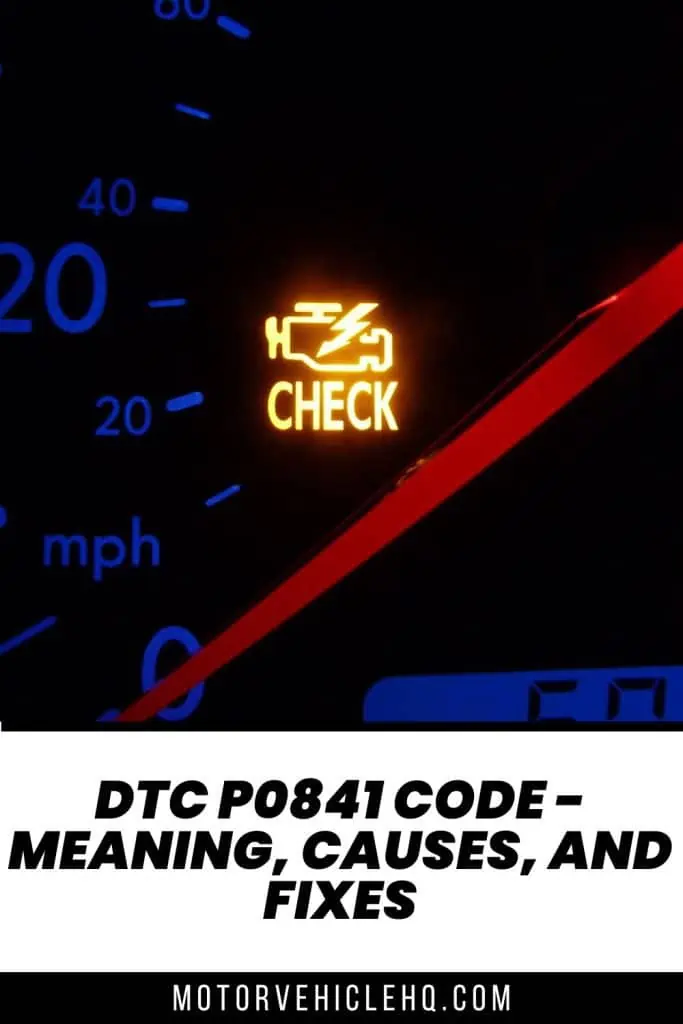
The Check Engine Light by Wikiuser100000 / CC BY-SA 3.0

Jim Wicks is the founder of MotorVehicleHQ. With over two decades of experience in the automotive industry and a degree in Automotive Technology, Jim is a certified car expert who has worked in various roles ranging from a mechanic, car dealership manager, to a racing car driver. He has owned more than 20 cars over the past 15 years. Ask him about any vehicle you see on the road and he can tell you the make, model and year. He loves the aesthetics of all things cars, and keeps his vehicles in pristine condition.
In his free time, Jim enjoys getting his hands dirty under the hood of a classic car or taking long drives along the country roads. His favorite car? A 1967 Shelby GT500, a true classic that, according to Jim, “represents the pure essence of American muscle.”
